5-10-5: Matthew Pottage, Curator of RHS Wisley Garden
Interview conducted by Eric Hsu Photography by Matthew Pottage

Please introduce yourself. My Name is Matthew Pottage, and I am the Curator of Wisley Garden, the flagship garden of the Royal Horticultural Society (RHS).
The arts or horticulture? Horticulture.
What is your earliest memory of plants or gardens?
Making a den under a huge Hypericum bush with my brother, and the smell of it! (of the bush, not my brother!)
Any terrible gardening mistakes you wish to admit during your incipient gardening experimentation?
Planting a large Dracaena draco outside at my parents house in Yorkshire where it promptly died in the first frost! (I was around 12 at the time…..)
Conifers have become unfairly unfashionable and may be due for a resurgence in popularity. What are some of their qualities you admire about them?
I love the value they add to a landscape, especially in winter. I love a garden that is a tapestry of colour, texture and form and find a landscape very bleak without evergreen content in winter so I find conifers really useful. I also think many of them are full of character and in the right position can be a real talking point.
How do you plan to proselytize them to the greater public?
By showing them off at Wisley to our 1.3 million visitors per year, and online through my twitter account @matthew_Pottage, that in a mixed planting, they can look really fabulous!
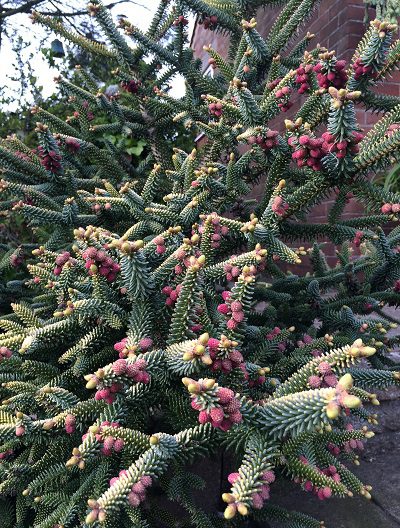
Two conifers, Abies pinsapo (Spanish fir) and Araucaria araucana (money puzzle and Chile pine) appear to be your favorites. Why these two taxa in particular?
I really love the cultivar ‘Aurea’ of the Spanish fir because it is so tactile, colourful and is of great garden ornament. The monkey puzzle is a childhood love – I had a teacher in primary school who was really creative and artistic and she had some branches of a monkey puzzle tree in the classroom. I was fascinated by them and immediately started to research the tree, and then started spotting them all over the place! It became a complete geeky hobby.

Several years you were given a RHS bursary to travel to Chile where Araucaria araucana (monkey puzzle or Chile pine) can form pure stands in volcanic mountain slopes at 600 to 1,800 m. As the experience of seeing plants in wild haunts often trumps seeing them in gardens, what did you take away from hiking among the trees?
It was an unforgettable experience, so much so I returned there in 2016 to visit them. It is like a prehistoric landscape of these giant pieces of living architecture. Seeing plants in the wild really helps the gardener understand the plants' growing conditions and why plants behave like they do in gardens.
Another interest of yours is variegated plants, which can inspire polarizing opinions. At work, a variegated pokeweed (Phytolacca americana 'Silberstein') is either admired or vilified by visitors. However, I imagine that variegated plants work well in UK's grey skies - being beacons of light. What variegated plants can you not be without?
I just couldn’t be without Pittosporum ‘Irene Patterson’ which has beautiful white, variegated leaves, or the exquisite Liriodendron tulipifera ‘Snow Bird’
What is a plant you desire to grow, but have not succeed despite repeated efforts?
Lapageria rosea. I love it, but need to admit defeat, it’s just impossible for me.
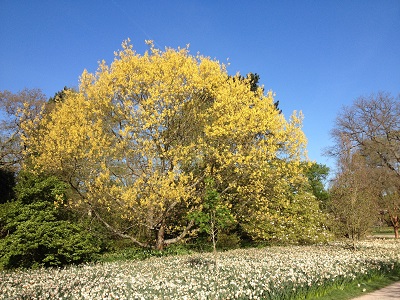
Royal Horticultural Society's garden at Wisley has approximately 43,000 accessioned plants and 25,000 taxa. It lists the following groups as its special collections: Orchidaceae, Epimedium, Colchicum, Galanthus, Hosta, Rheum, Cyclamen, Narcissus, Daboecia, Erica, Calluna, Rhododendron, conifers, heathers, Mediterranean and Near East bulbs, and apples. Outside of conifers, are their specific plants you find close and personal at Wisley?
We have many fine trees at Wisley, and they add immense character to the gardens, each with its own personality. Some of these fine trees include Quercus robur f. fastigiata, Pinus coulteri, Chamaecyparis lawsoniana 'Lutea', Quercus rubra 'Aurea', and Eucalyptus dalrympleana. In total contrast, I really love the cacti and succulent collections in the glasshouse.
Within a short time, you have risen up from the ranks of trainee gardener to become the Curator at Wisley. You have held different positions that ranged from Glasshouse Supervisor, Team Leader to Deputy Curator. What did you take away from each position that informed your current role?
Always the same lessons, but with each step, a huge dollop more responsibility! Work hard, do your best, have a ‘glass half full approach’ and try to be fair and effective as opposed to always trying to be liked. Also, nothing is served to you on a plate, you have to make it your business to get things done, and all of the above has helped my journey to this role today.
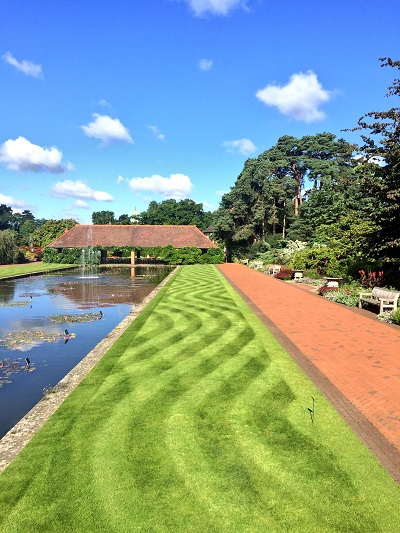
I have not been to RHS Wisley since 2007, but it has been exciting to witness the development of garden areas (Tom Stuart Smith's Bicentenary Glasshouse Borders Landscape, James Hitchmough's steppe garden meadow areas, and Bowes-Lyon Rose Garden, designed by Robert Myers). What exciting projects should we see on the horizon under your tutelage?
We are currently working with Christopher Bradley Hole to completely redesign our entrance landscape and how you arrive at the garden. It’s a big undertaking, which will see the creation of a new shop and plant centre, and arrivals building. Within the gardens, we are creating a new Exotic Garden, due to open Summer 2017 and in 2018 we will be refreshing and redesigning the heather garden. However, generally, across all garden areas I want to build on, and improve attention to detail and plantsmanship.
Within the last few decades, the Royal Horticultural Society has expanded beyond its original flagship at Wisley to Harlow Carr, Hyde Hall, Rosemoor, and now Salford, securing its representation throughout Great Britain. How do you see your role as the Curator of RHS Garden Wisley in relation to other curators at these satellite gardens?
As part of the curators' team of the RHS, we meet quarterly to view each other’s gardens, share best practice and learning and in recent days I have been spending time with the Curator of the new Salford garden, talking him through the way I am leading things at Wisley, to help him get off to a quick start.
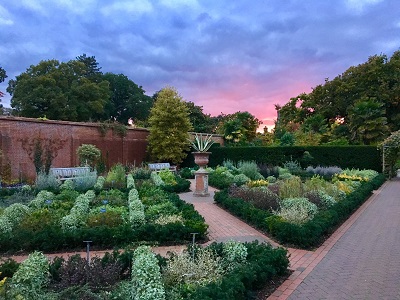
Great Britain's tenure in the European Union dismantled bureaucratic and economic barriers to trade, hence the more porous borders ushered in an influx of plants and horticultural goods from continental Europe. The downside of this economic free trade has been the introduction of pests and diseases, such Asian box caterpillar and oak processionary moth, not seen previously in British gardens. How do you address these challenges at RHS Wisley and elsewhere in you work?
We are very much here to share the best in gardening, and support the gardening public, and through our science work, work closely to look at control, elimination or management practices which we can then share with our members and the gardening public. For example, box tree caterpillar very quickly appeared at Wisley, and while our science team can advise on control, we have laid out a planting of Buxus alternatives which we are trialing as we are finding many of our members are having problems with both the caterpillar and box blight and are eager to learn what else they can plant.
Much has been lamented about the waning interest among millennials in gardens and ornamental plants. The nursery industry in US has struggled to capture the attention of young people at a time when food, fashion, and design sectors successfully have done so. Much interest in ornamental plants have been primarily houseplants for urban dwellers and specialty cut flowers from young people seeking to diversity from edibles in farms. What do you see the horticulture industry heading in UK?
I really hope (and the RHS is trying to promote this) that people will start to understand that gardening and greenspaces is good for your health and well being, and people actually benefit from having plants in their lives, and that gardening can be accessible to all, whether through houseplants, window boxes, or just a simple planter by the front door.
A number of trainee programs in the National Trust, RBG Kew, RBG Edinburgh, and Cambridge Botanic Garden are now well established, and it is positive to see the number of young faces enrolled in these programs. How is the trainee program at RHS Wisley structured?
We have two programmes, a two year programme of intense study, coupled with a rotation through all the garden teams. It is a fully accredited course which is still very ‘hands on’ and is a fantastic, comprehensive, offer. In addition, we have a two year apprenticeship programme, which has a focus around introducing people to professional gardening, and grasping the basics. Many of our apprentices go on to the student course to continue their development.
Can you single out any of your peers whose work at other gardens, public and private, excites you?
I have a friend called Robbie Blackhall Miles (www.fossilplants.co.uk) who is growing different Proteaceae which have been collected as seed at very high altitudes, and could have hardiness potential for the UK climate. Robbie is a great planstman, and it’s always fascinating talking to him and hearing about his work.
What gardens outside of RHS, private or public, you find yourself visiting again and again?
I'm a huge fan of the National Trust gardens, two in particular, Bodnant in North Wales, and Sheffield Park in Sussex. Both have magnificent trees and have a wonderful atmosphere.
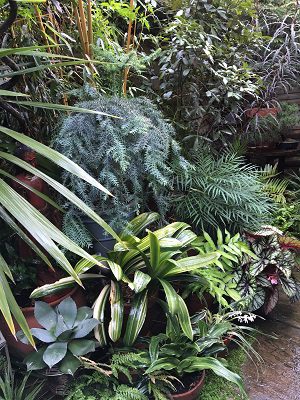
On top of your busy career, you manage to garden outside of work in London and Yorkshire. I imagine that London's unique microclimate enables you to grow plants usually cossetted in glasshouses, but Yorkshire is no banana belt, being northern and colder. What are the two gardens like?
The garden in Yorkshire is very tough – heavy and poorly draining clay soil, constantly windy conditions and near the coast, so salt laded winds. However, the clay soil can be improved and when cared for, we get great results once things establish. My tiny London is great fun, and is full of plants we’d usually consider as houseplants, like Adiantum, Clivia and Platycerium. However, the drawback is everything is full of pests year round, typically aphids and red spider mite!
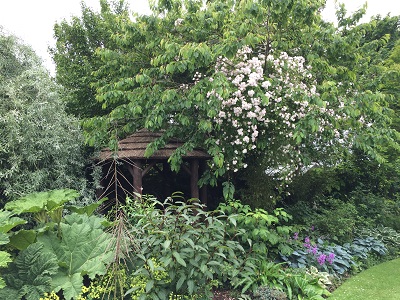
What are you looking forward the most in the future?
I’m really looking forward to the coming years at the RHS while we deliver some projects at Wisley that will really help take it to a new level. The RHS is full of brilliant people and while each day can be incredibly busy, it’s always fun, productive and dynamic.
Thank you Matthew!





